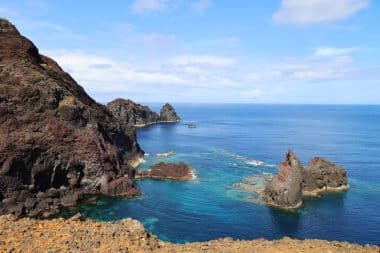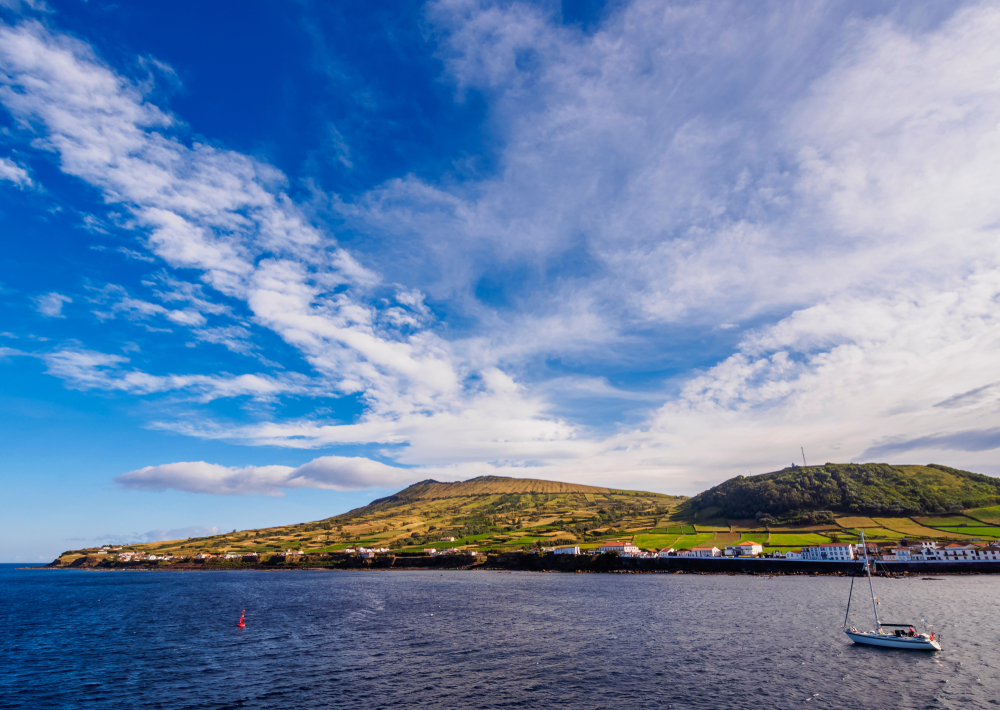The archipelago of the Azores, which belongs to Portugal, is not necessarily one of the most visited tourist destinations. That’s exactly her big plus. Because despite a pleasant climate, wonderful flora and fauna, great beaches and excellent food, you can relax here in peace and quiet and also actively relax. The archipelago of the Azores is often visited by tourists in their entirety. This means that a round trip across the islands is often undertaken. If you don’t visit the second smallest Azores island Graciosa, you’re missing out. The name of the island, which is only 61 square kilometers in size, keeps its promise. Translated into German, Graciosa means something like dainty. Like the other Azores islands, it is also of volcanic origin. Graciosa is considered flat and exceedingly green. A perfect place for relaxed walking and cycling trips. Since 2007, the island has been a UNESCO Biosphere Reserve.
A visit to the island’s capital Santa Cruz da Graciosa
With just under 1,800 inhabitants, Santa Cruz da Graciosa is not only the island’s capital, but also the largest town on the Azores island of Graciosa. Just like the entire island, the capital Santa Cruz da Graciosa is more rural and looks more like a village than a city. Here, visitors can easily reach all the sights on foot, because Santa Cruz da Graciosa is clearly arranged. The center of the city is the Rossio, i.e. the town square. Here, quaint cafés are lined up and invite you to sit in the sun with a coffee and watch the hustle and bustle. Tall dragon trees line the Rossio and provide shade at lunchtime.
The neat residential buildings in the inner city area come from the 18. and 19th century and give an impression of how the place was laid out in earlier times. The main church of the city, the Igreja Matriz de Santa Cruz, is absolutely worth seeing. It dates back to the early 16th century and has been expanded and rebuilt again and again over the years. Its church tower dates from 1732. There are several other small churches, chapels and monasteries in the city. A little south of Santa Cruz da Graciosa, the city’s local mountain, Monte da Ajuda, can be climbed. Here, on the volcanic hill that makes up Monte da Ajuda, there are three pilgrimage churches with colorful interiors. A walk of about 20 minutes leads from the city center up to the summit.
In addition to the churches, a bullring can also be visited here. If you want to learn about the wine-growing and whale-making tradition of the islanders, visit the Museu da Graciosa after this walk. In earlier times, the islanders lived mainly from whaling. It was banned here in 1982. You can swim at the foothills of the city in natural lava pools, the Piscinas naturais. Here the water is shallow and always warm.
With the courage of discovery to the Caldeira da Graciosa crater

The Caldeira da Graciosa crater is extremely impressive. With a diameter of 1.6 kilometres on one side and 800 metres on the other, it has a depth of 270 metres. The best way to climb is via the designated hiking trail to the Furna da Maria Encantada cave. Or you enter a tunnel, also marked as a hiking trail, which leads you into the volcanic crater itself. The crater is covered in wonderfully lush green. On the way there, hikers pass lush vegetation of sticky seeds and acacias, Japanese sickle firs and fir trees. The sulphur grotto called Furna do Enxofre forms the interior of the volcanic crater. You climb the 40-metre-deep grotto through a brick tower that was built at the beginning of the 20th century. This will take the adventurous to a lake inside the volcanic crater. Furna do Enxofre can be imagined as the chimney of a volcano. This somewhat mystical volcano and cave adventure impresses adults and adventurous children alike.
Relax at the Carapacho Thermal Spring
After the exciting volcano adventure, visitors are probably in the mood for a little relaxation. And that’s what the island of Graciosa also has to offer. The Carapacho thermal spring has been bubbling here since 1750. Not only is it close to Furna do Enxofre, but it is also directly connected to it. The thermal water of the Carapacho spring comes directly from the volcanic crater. It contains numerous minerals that can alleviate rheumatic diseases, for example. In the 19th century, the small town of Carapacho was famous as a spa in circles of wealthy Azoreans and Portuguese. Today, a modern spa house invites tourists and locals alike to enjoy spa treatments. The thermal water has a temperature between 35 and 40 degrees Celsius. There is both an indoor and an outdoor area. In the outdoor area, visitors bathe in a naturally created sea bathing facility.
Windmill idyll in the village of Praia
If you travel by ferry to the Azores island of Graciosa, you will land in Praia, because this is where the island’s ferry port is located. On this occasion, you should take a look at the traditional windmills of the village. They are true tourist magnets and have been lovingly restored for this reason. In some of the windmills, tourists can even spend the night. South of the harbour stretches a romantic sandy beach, from where excursions can be made by boat to the uninhabited offshore Ilhéu da Praia. The nature reserve there is home to a variety of rare seabirds.


